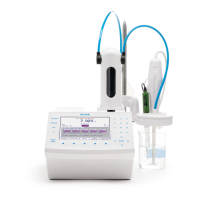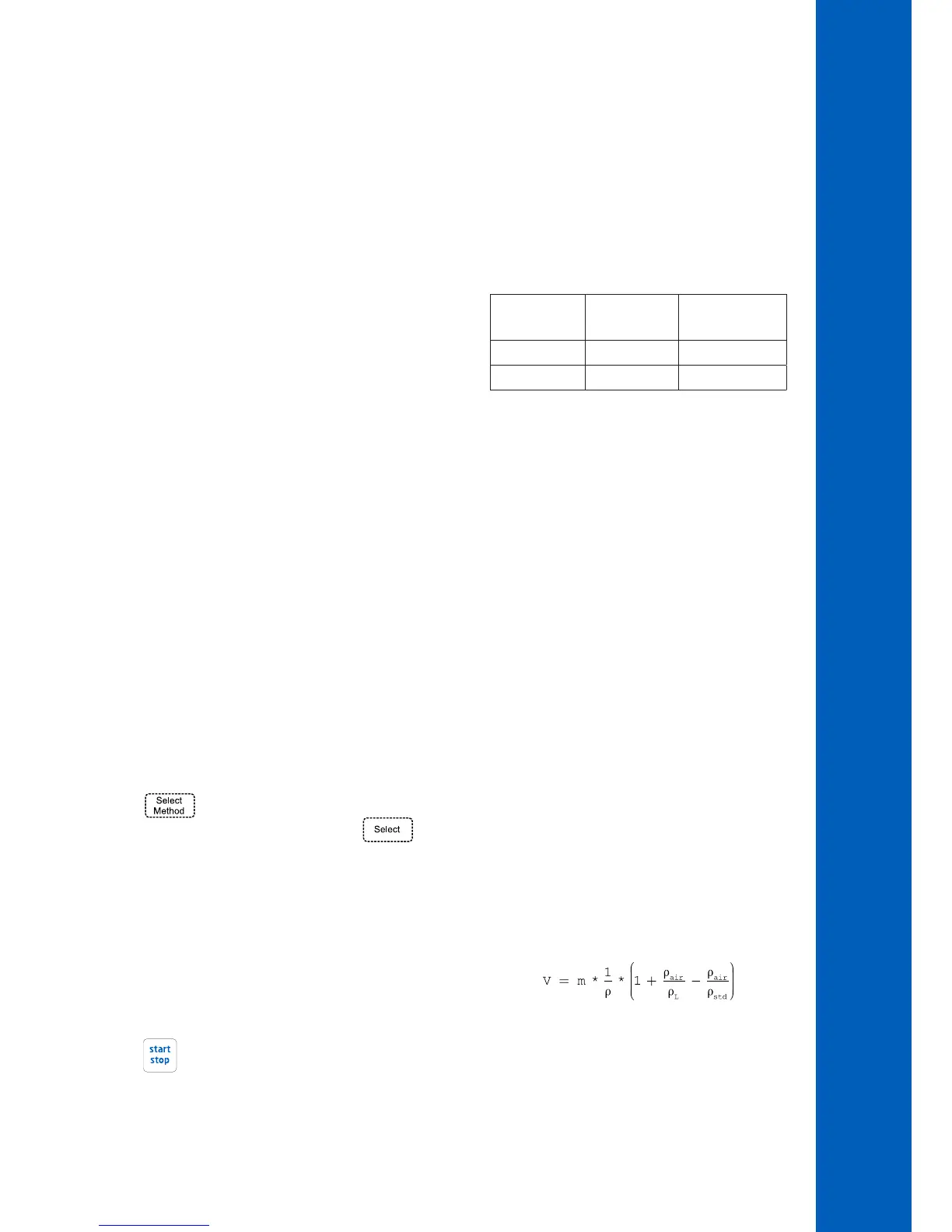21
TROUBLESHOOTING 1
DESCRIPTION
Method for verifying the dosing and potentiometric signal accuracy
of the titrator. This method should be used to troubleshoot a titrator
equipped with a 25 mL burette. The titrator dispenses a 20.00 mL
pre-titration volume, waits 20 seconds and dispenses an additional
20.00 mL dose, bringing the total volume to 40.00 mL. This
procedure can also be used to check the stability of the mV and
temperature channels.
The specifications of the dosing accuracy are ± 0.1% of the full
burette volume (± 0.025 mL for a 25 mL burette). For the accuracy
of other burette volumes, see the instruction manual.
If the results are not correct, check all fittings for leakage, and burette
and tubing for air bubbles. Repeat the measurement.
REFERENCE
ISO/TC 48/SC1N 380E and 383E: “Piston and/or Plunger Operated
Volumetric Apparatus”
ACCESSORIES
• HI762000C 0°C Temperature Key
• HI762070C 70°C Temperature Key
• HI70436 Deionized Water (1 gal)
• HI7662-T Temperature Probe
• Shorting Cap
• Narrow Neck Beaker
• Analytical Balance with 0.0001g resolution
DEVICE PREPARATION
• Connect the shorting cap to the BNC socket on Analog Board 1
• Install a 25 mL burette filled with room temperature deionized
water (HI70436) on pump one and verify that no air bubbles
are present in the burette or tubing. If necessary prime the
burette until all the air has been removed completely.
• Press from the main screen. Use the arrow keys to
highlight HI1011EN Troubleshooting 1 and press .
LARGE DOSE DISPENSING PROCEDURE
• Add a small amount of deionized water to a narrow neck beaker.
By doing this the air space in the beaker will be vapor-saturated
minimizing evaporation.
• Place the narrow neck beaker on an analytical balance.
• Zero the balance.
• Place the dosing tip through the neck of the beaker. Take care
not to immerse it in the liquid during dispensing and not to
touch the beaker walls.
• Press .
• Write down the exact weight displaced on the balance after
each dose.
• The following information is needed to verify the accuracy of the
dosing system:
• The temperature of the dispensed water
• The atmospheric air pressure
• The density of the weight used to calibrate the balance
• This procedure can be repeated on pump 2.
Other burette sizes can be checked using the following settings:
Burette Volume Pre-titration
Volume
Max. Titrant
Volume
5 mL 4.000 mL 8.000 mL
10 mL 8.000 mL 16.000 mL
METHOD PARAMETERS
Name: Troubleshooting 1
Method Revision: 3.0
Analysis Type: Standard Titration
Analog Board: Analog 1
Stirrer Conguration:
Stirrer: Stirrer 1
Stirring Speed: 0 RPM
Pump Conguration:
Titrant Pump: Pump 1
Reagent Addition 1: Disabled
Reagent Addition 2: Disabled
Dosing Type: Linear – 20.000 mL
End Point Mode: Fixed 10.0 mV
Pre-Titration Volume: 20.000 mL
Pre-Titration Stir Time: 0 sec
Measurement Mode: Timed Increment
Time interval: 20 sec
Electrode Type: Shorting Cap
Blank Option: No Blank
Calculations: No Formula (mL only)
Titrant Name: DI Water
Maximum Titrant Volume: 40.000 mL
Potential Range: -2000.0 to 2000.0 mV
Volume/Flow Rate: 25 mL/50.0 mL/min
Signal Averaging: 1 Reading
Signicant Figures: XXXXX
CALCULATIONS
The measured volume of the dispensed liquid is calculated from the
measure mass using the following equation:
V Volume of measure mass of water (mL)
m Measure mass of water (g)
ρ
L
Density of dispensed water (g/mL)
ρ
air
Density of ambient air (g/mL)
ρ
std
Density of calibration standard weight (g/mL)
TROUBLESHOOTING 1
METHOD ID: HI1011EN

